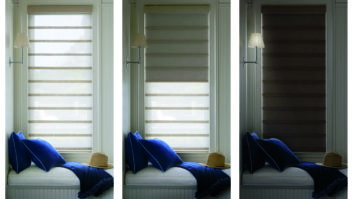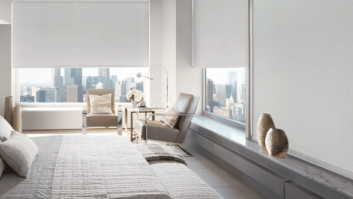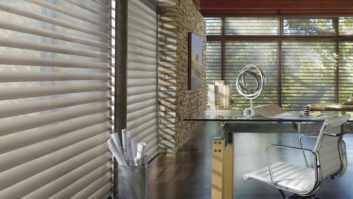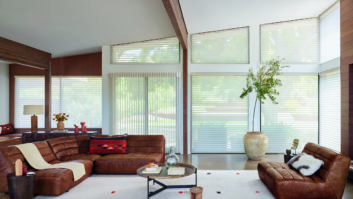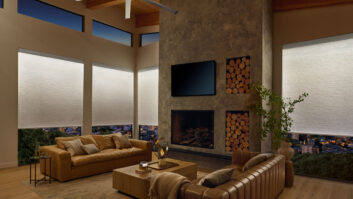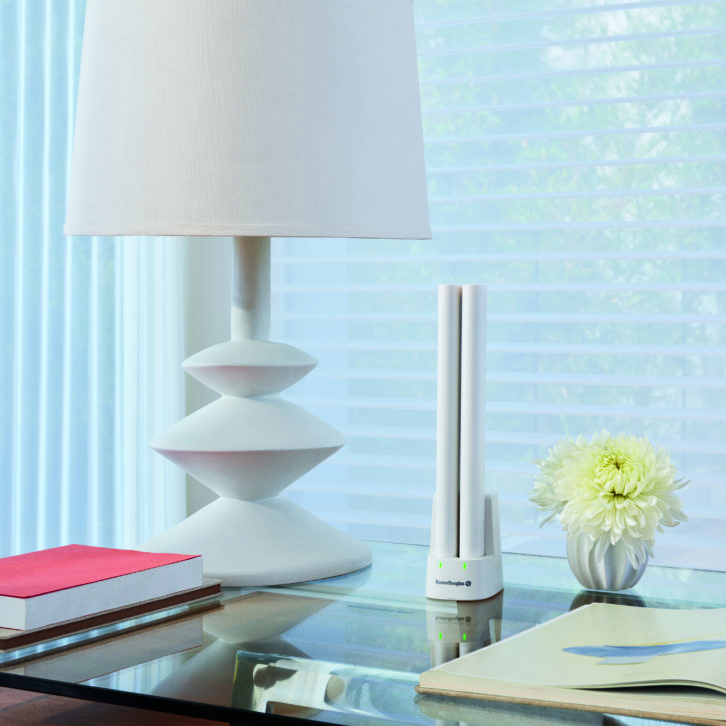
When we were looking at buying our first (and current) house back in 2000, I concerned myself with things like checking out the attic to make sure I could retrofit wiring throughout and that the home had a suitable location for a home theater system. My wife wanted to make sure the existing window treatments were going to convey to our needs. (For simplicity sake, I’m just going to use the generic “shade” to refer to all styles of window treatments.)
This wasn’t a thing I even considered as everywhere I’d ever lived always just had some kind of a shade already in place. And if the room got dark at night, and people weren’t looking in at me during the day, well, my shade needs were pretty much met. The fact that we might actually have to buy and choose these things was a totally foreign concept to me.
While they are ubiquitous, and kind of one of those necessities of “polite society,” window shades are one of those things a lot of people don’t really get excited about or maybe even notice. When it comes to things like fabric, look, and style, I’m happy to let my wife decide. (In exchange, I get a 115-inch projection screen and 13.2-speakers in our living room, so I feel it’s a pretty fair trade.)
Beyond privacy and room darkening, window shades also do a great job of helping insulate the home (between 30–50 percent of a home’s heating/cooling can be lost at the window), and keeping sunlight from damaging furniture and flooring. But even though they’re important and necessary, window shades are still kind of a meh category because most of them just aren’t cool. But, when you add a little motorization and introduce an automation element to them, now you’re talking!
By providing customers the ability to control shades automatically with a remote, app, automation trigger, or timeclock event, you are offering a huge lifestyle improvement that doesn’t require a lot of explaining. Instead of taking a twice daily walk around the home to adjust the shades — once in the morning to raise them to let in light, then again in the afternoon to lower them for privacy — it can just…happen.
Even if you know absolutely nothing about window shades, chances are you’re familiar with Hunter Douglas, as they’ve been in the window covering business since basically forever (founded in Germany in 1919). But when the company introduced its PowerView Automation series in 2015 and then launched its Custom Integrator Program (CIP) in 2019, it started getting serious about embracing our channel. And whether you’re new to automated shading or you’ve been installing them for years with another solution, there are two big reasons why you owe it to yourself to give Hunter Douglas’ CIP program serious consideration: price and selection.
Getting Started
One does not simply decide they want to sell/install Hunter Douglas products and then pick up the phone and place an opening order. Joining the CIP requires both a financial commitment in the form of an opening order and a time commitment in the form of online training.
The requisite $2500 opening order gets you a CIP “Sample Package” that includes all the materials you’ll need to be successful presenting, demonstrating, and selling Hunter Douglas shades. However, calling it a “Sample Package” sells it a bit short as it includes eight massive books filled with hundreds of fabric samples that feature Hunter Douglas’ different styles divided into groups like Silhouette Window Shadings, Pirouette Window Shadings, Duette Honeycomb Shades, and more. It also includes a fully working PowerView kit, and a handheld PowerView Automation shade sample that allows you to demonstrate the motorization. CIP dealers are also eligible for 75 percent off MSRP for any showroom orders.
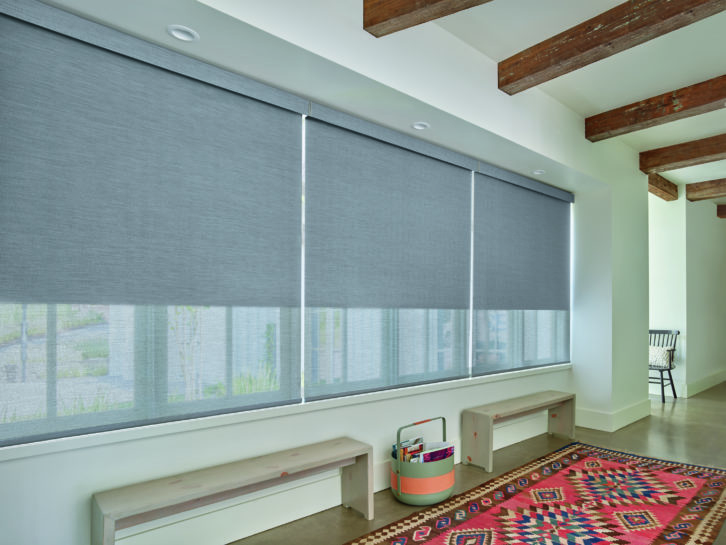
There are two parts to the training — Sales and Installation — that Hunter says should take about 10 hours to complete if you plan to do all the installation yourself. The video trainings are divided into different sections (Product Knowledge, Technology, Measuring and Operating Systems, Foundations of Installation, etc.) and are taken at Hunter Douglas’ The Link dealer site.
I’ll be honest, I found the training a bit tedious and mind numbing with all of the model names and styles jumbling together, and I had to spread the lessons out over multiple days to get through it. Getting all that training and all those sample books and all those fabrics is a bit overwhelming — like trying to take a drink from a firehose. In the end, I kinda semi-guessed my way through some of the post-course assessment exam questions — especially when it came to remembering product names and specifics.
Fortunately, there are loads of on-demand training and learning sections at The Link — such as a 160-page online reference guide — including some live trainings, and it is pretty easy to find any specific training or information you require. As with anything, your familiarity will increase as you use and work with the products. Also, you’ll have access to the Hunter Douglas Mobile Selling App (for iPad), along with a dedicated Hunter Douglas rep and CIP team to help with any design, sales, or installation questions, including access to the Hunter Douglas Installation Service (HDIS) that can provide an end-to-end solution for specifying, measuring, ordering, and installing to guarantee a perfect result.
Pre-Installation
While Hunter Douglas offers a variety of manual and powered shading control options — all of which are available to CIP members — I’m going to focus solely on its PowerView shades here, which include more than 20 different styles. PowerView not only offers motorization, it also provides app-based control as well as integration with a variety of automation systems. It will definitely be the product custom installers will be working with most frequently, and it requires the most pre-installation planning.
Of course, prior to installing the shades, you’ll need to select the style and determine how they will be powered, both of which offer several options.
Hunter Douglas offers several unique styles that will certainly appeal to homeowners and decorators alike. Beyond a huge variety of roller screens and shades (in a myriad of styles, colors, and opacities), cell shades, Roman shades, and wooden shutters, Hunter Douglas has some offerings you won’t find elsewhere.
Four of these include, Pirouette Window Shadings, Duette Honeycomb Shades, Silhouette Window Shadings, and Designer Roller Duolite Shades. Pirouette Window Shadings have soft horizontal fabric vanes that float on a sheer backing, allowing you to achieve infinite combinations of light control, privacy, and view-through. Duette Honeycomb Shades work on all window types, including skylights and can be ordered in top-down/bottom-up models that allow you to adjust the shade from either direction for maximum light/view or privacy. Silhouette Window Shadings use an S-Vane design to float an adjustable vane between the two sheer panels. The adjustable vane diffuses sunlight to allow ambient light into the room, or it can be closed for privacy.
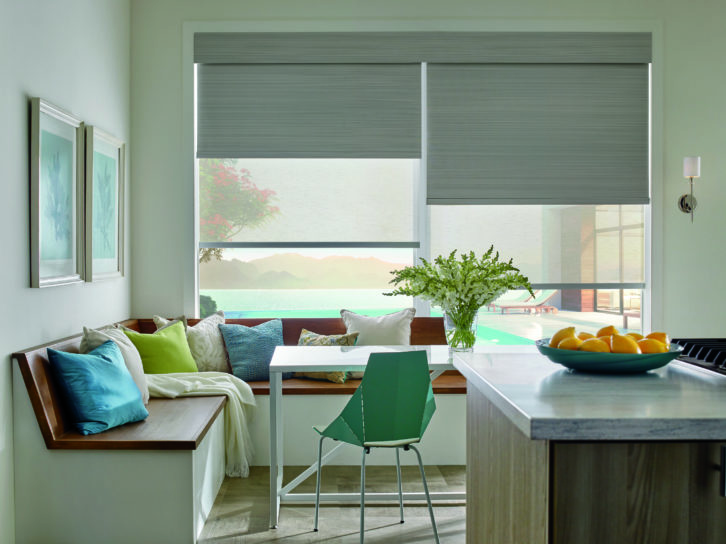
For the 20 years we’ve lived in our home, we had never raised the shades in our bedroom. Because our room faces the road, raising the shades basically invites everyone in for a free peep show. So, we wanted a shade that let in light during the day while still providing some privacy, but that offered total privacy and room darkening at night. Fortunately for us, Hunter Douglas’ unique Duolite Designer Roller Shades totally fit our needs. This system is available in a variety of shading styles and is the first-ever double-fabric combination of a light-filtering sheer shade and a room darkening opaque liner on a single roller shade.
While other solutions are available that provide both sheer and blackout, these have required dual rollers and motors, meaning a larger size and higher budget. With Duolite Designer Roller Shades you can enjoy both in the same, small form factor. For us, Duolite Designer Roller Shades coupled with PowerView motorization allows us to enjoy natural light and privacy in our room every single day.
The next thing you’ll need to account for is how you’re going to power these shades. In new construction, pre-wiring is definitely the way to go, as it makes for a cleaner install and requires no homeowner interaction. Hunter Douglas offers affordable 16-shade power supplies in two options: PowerView and PowerView+. PowerView uses standard 2-conductor wiring to each shade, communicating via RF signals, where PowerView+ adds two additional conductors for communication and control, the side that has power/control connections vary based on the shade style.
If pre-wiring isn’t possible, Hunter Douglas offers four other options for powering the shades: local 18-volt DC power, a Battery Wand, a Satellite Battery Pack, or a new Rechargeable Battery Wand. Battery powering makes for simple installs, but it means finding a place to mount/install the back that provides homeowner access, and keeping a drawer-full of replacement batteries on hand.
Having lived with Lutron battery-powered shades in my living room for years, I know firsthand the pains of changing out piles of AA and D batteries, and seeming to never have the right combination and number of replacements on hand when one of the shades stops moving. I loved the idea of a rechargeable wand the second I heard it, and knew this would eliminate a massive pain point.
Hunter Douglas claims the rechargeable battery lasts for a year with two daily (one up, one down) cycles, and that each battery has a life-cycle of 500-charges. The dual charging station charges two batteries to full in approximately three hours, and a fully charged battery is said to lose about 2-3 percent per month, meaning you can keep a charged one in a drawer always ready as a hot spare. Plus, the rechargeable-battery pack is a breeze to change out of its magnetized holder. Brilliant!
Installation
All of my shades are “outside mount,” meaning they install outside the window frame, as opposed to inside. This meant installing the included spacer blocks behind the shade mounting clips in order to clear the window trim. Installation requires measuring the height up from where the bottom of the shade will be (the window sill in my case) to the overall height of the shade, which is where you’ll install the top of the shade brackets. With Duolite Designer Roller Shades, getting the height correct is crucial as the blackout portion of the shade doesn’t deploy until the sheer shade is fully extended. For wide shades, I set the center bracket first, leveled the shade, lowered it all the way to confirm the height, then made marks and installed the other brackets. Once the brackets are installed, the shade assembly clips and locks into place, with the ability to slide it left/right to get it centered.
#ProTip: I’d strongly suggest cleaning your hands between every shade install. The fabric-wrapped fascia — especially on lighter colors — is definitely prone to getting dirty, and it’s a case of better being safe than sorry.
Once the shades were up, plugging in the Rechargeable Battery Wand is a simple process, but concealing it is not. With inside mount shades, you can mount the battery pack to the back of the headrail and conceal it behind the shade, but there is no good place to hide it on an outside mount. I ended up just lying the battery pack across the top of the shade. While it doesn’t bother me — remember, I’m the guy that has 13.2 speakers in his living room — it is totally visible, and probably would be objectionable for some customers. You could shim the shades even further out from the wall, mounting the battery pack underneath where the shades would drop in front of it, but then the shades would sit further away from the windows.
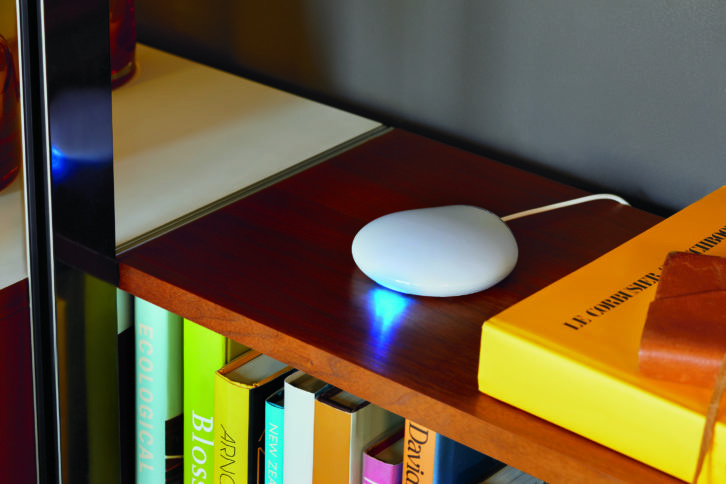
The PowerView kit comes with a Hub and repeater. The Hub sits on the network, either wired or Wi-Fi. With all of the shades in my room, I didn’t need the repeater, but for larger homes additional repeaters can be added to the project.
Once the Hub has been added, you create a PowerView shade network and then join remotes to it, add and identify the shades, and create a PowerView account that enables remote access. This entire process is quick and intuitive, and I had all shades added to the system and being controlled in a few minutes.
Hunter Douglas offers three ways to control your PowerView shades: the PowerView Pebble Remote, the Scene Controller remote, and the PowerView app. For the remotes (each powered by two CR2032 batteries), Hunter Douglas offers an ergonomically designed holder called the Pebble that is offered in ten different colors, and a wallmount holder called the Surface.
The PowerView Remote has six programmable buttons to control shades individually or in groups, an All button that controls all shades, and a favorite button that takes the shades to the preferred position. The Scene Controller has an OLED screen that displays any programmed scene names, letting you easily cycle through and select any scene, along with two favorite keys for quick access.
In Use
While the remotes — specifically the Scene Controller — are cool, in practice I almost never used them, opting to use the app almost exclusively. I set up four scenes in the PowerView app — Morning, Daytime, Sunset, and Goodnight — and then added automations to trigger these scenes at specific times during the day, then pretty much just let the system do its thing. After 20-plus-years of never raising the shades in our room, being able to enjoy some natural lighting during the day was fantastic, and the blackouts made the room dark enough for sleeping.
What’s great about the app is that, once the system has been set up, it puts a lot of the power for adjustments into the homeowner’s hands, meaning they don’t need to call you to add new scenes, change automation schedules, or make tweaks. There’s also a setting in the app to make auto backups of the Hub in case something drastic happens.
PowerView integrates with a host of third-party control systems, as well as offering voice control via Amazon, Google, and Apple. Tying the shades into my Control4 system was a snap as the hub announces itself via Control4’s SDDP auto-discovery; then it was simply a process of linking the shades and scenes. Once part of an automation system, you can then have them respond to other events like thermostat temperatures or entertainment scenes. It also provides a single place to go and look at the status of all devices in the home.
Interestingly, I actually preferred controlling the shades within Control4 because I found it more precise. In the PowerView app, you get visual representations of the shades’ position, but no numerical feedback, and making small, precise tweaks can be difficult. But within Control4 I can set the shades to exact percentages, making it easier to get them all perfectly aligned.
Another benefit of controlling the shades with Control4 was remote access when away from the home’s Wi-Fi. While the PowerView app allows for remote access, it’s a pared-down experience, letting you only execute scenes that have been created, whereas in Control4 I had full feedback and control. (I did have an issue with the blackout shades reporting incorrect status within Control4. Cinegration, the PowerView driver developer, is working on resolving this with Hunter Douglas.)
Having lived with motorized shades from Lutron and Crestron for some time, the Hunter Douglas shades are definitely a fair bit louder in operation, especially when the blackout shade is in operation. Where I would call the Lutron roller shades virtually silent, and the Crestron shades as producing a low hum, the Hunter Douglas shades are loud enough to wake us up. They’re not as loud as the Somfy motors in our video projection screen, but definitely closer in volume to that than the other shades. Granted, this is five shades all moving at once in an otherwise quiet bedroom, but they are louder than other motorized solutions. This is also a byproduct of the way the Duolite shades work, with the tube-inside-a-tube design creating an amplification chamber that increases the volume. People new to motorized shading likely won’t notice — or care — but be aware they are louder than some other solutions.
The Hub has an LED that displays different colors based on its status (booting up, updating, normal operation, etc.). While this LED can be dimmed, it can’t be fully turned off. Also, it periodically does things that cause the light to come on at full brightness and then blink. I’m pretty light-sensitive when sleeping, and there were several times that I was awakened to see this bright light flashing. Of course, the simple solution is positioning the Hub outside rooms with sleepers, but it took me a few wake-ups to learn this lesson.
Motorized window shading is one of the fastest growing segments in our channel, offering a massive growth and installation opportunity since virtually every window in every home is going to have window coverings of some type. With Hunter Douglas you’ll have an unparalleled selection of fabrics, styles, and solutions that will appeal to any homeowner or designer. While joining Hunter Douglas’ CIP requires an upfront commitment, it is certainly offset by the quantity of materials provided, and determined dealers will be able to reap rich rewards from embracing the program.
https://www.HunterDouglas.com; 800-789-0331
Kudos: Massive selection of styles and fabrics; variety of power options, including rechargeable batteries; proven name in window coverings
Concerns: Concealing the battery pack in outside mount installs
Product Highlights:
- Custom Installation Program (CIP) requires $2500 investment for sample materials
- PowerView motorization available on 20 different shade styles
- Duolite shades offer both sheer and blackout fabrics on a single roller
- Power options include hardwiring to a 16-shade power panel, local DC power, battery wand, or rechargeable battery pack
- PowerView AC now supports custom sizes up to 156 x 180 inches (WxH) or up to five coupled shades at 240 inches wide
- Control options view PowerView Remote, Scene Controller, PowerView app (iOS/Android)
- Supports third-party integration with Control4, Crestron, Elan, IFTTT, RTI, Logitech, Savant, URC; voice control via Amazon Alexa, Google Assistant, Apple HomeKit
